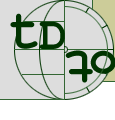Dear friends, dear colleagues, ladies and gentelman!
Having a questionable advantage and dubious privilege of being the oldest living member of the
Theory Department, participating in its work for 69 years. I have been offered by the Organizing
Committee to tell you quite briefly something about history of our Department on its origin and
on its life during 70 years of its existence.
Let us recall the main features of the period of its formation - the end of 1934, - both, of social
life in this country and of the situation in our science, as well as on crucial events in world
physics in the same period.
For the country the most important event was, first of all, the complete finishing of the process
of so called total collectivization, i.e. private peasantly agriculture system was transformed
into kolkhoze (collective farms) system. This brought about decay of agriculture for many
decades and immediately – hunger for the entire country. The process was very cruel. Millions of
peasants either died from hunger or were departed into Siberia and other northern regions,
or become workers on numerous, often gigantic plants and factories which were under construction
in accordance with simultaneously happening industrialization of the country.
Secondly Stalin’s total dictatorship became firmly established, the years of Big Terror with their
famous false trials against “enemies of the people” just began. Ideological, mainly ignorant
pressure was already working heavily. Totalitarian state was thus successfully constructed.
"Intelligentsia" hated, despised and humiliated by Stalin and by his faithful servitors, formed
the second rate layer of population (which of course was used by bosses when it was necessary).
But however strange and unbelievable this may seem science developed very rapidly and widely.
New rulers of the country understood necessity of "cultural revolution" in half illiteral
country in which the educated upper classes with their remarkable high culture sharply contrasted
with illiteral majority of literature and art but also in science the country has already
demonstrated its readiness for the first class achievements, - in mathematics (Lobachevsky,
Chebyshev, Markov and others), in chemistry (Mendeleyev and some others), physiology
(Pavlov and Mechnikov belonged to the very first Nobel prize winners), Lebedev was the
first physicist which proved existence and measure pressure of light etc. But the general
scale of science development was not adequate for such a country as Russia.
Almost all leading scientists used to go for additional education to Germany, Swiss or
France, In our country we did not have enough special research institutions.
Meanwhile communist ideology based on Marxism considered as "scientific socialism" (in
distinction from preceeding socialist type Utopian conceptions by Thomas Moore, Robert
Owen etc) i.e. on scientific doctrine, meant recognition of dominant role of science
in general. Together with understanding the pragmatic necessity of science for technology
this led to generous governmental support of science even in very hard conditions.
This was realized and demonstrated immediately, still during civil war in the exausted
hungry country with outdated economics destroyed by World war I and civil war.
Already in 1918 the very good Optiacal Institute was organized and headed by outstanding
physicists D.S.Rozhdestvensky in Petersburg. Here were working on fundamental problems
such theoreticians as young professor V.Fock, experimentalist Terenin and many others.
Besides, this institute founded and governed a large industrial optical institution which
soon began to provide the country with all necessary optical instruments from binoculars
to optical telescopes. Many telescopes with 1,5 – 2,6 meters mirror diameter were
(later, of course) placed through the country and (much later, of course, in 1975) the
largest reflector with 6 meters mirror diameter was made of Caucasus.
In the same 1918 year, also in Petersburg Professor Ioffe founded the Phisical-Technical
Institute which soon became the large center for all physics of the country. Later many
new institutes separated from it and were working not only in Petersburg but also in Kharkov,
Sverdlovsk (Urals), Tomsk (Syberia). Moreover still during civil war in Petersburg appeared
Institute for Radiology and Rentgenology headed by Professor V.Khlapin.
This process became particularly intensive when in 1921 civil war ended, new economic more
liberal policy was adopted in 1922, peasants restored individual agriculture, production of
food swiftly increased, hunger was forgotten and general situation within the country
greatly increased. Unfortunately the collectivization leading to total Kolkhose system
drived on more and more by Stalin mined this peaceful and well-being. The same Kolkhose
system which thirty years later in the form of Kibuz brought about prosperity in the
Israel, due to the incompetence and cruelty of the Soviet leaders ruined agriculture and in
1929 again the country entered very hard period. Food rationing system was introduced, again
hunger tortured people and this lasted until 1934. But nevertheless new scientific institutions
were growing and now industry by and by enlarged the variety and quantity of laboratory
equipment. Again government was generously gave money for science. Fore proceeding years
greatly enlarged the number of scientists, young and enthusiastic, in all branches of science.
In Moscow, where in the University, since reactionary reform of 1912, when some 130 best
professors protesting against it left the university, the outdated remaining professors
dominated the contemporary physics was in bad state until in 1925 there appeared a remarkable
world-rate and world-wide known man, Professor Leonid Mandelstam. He became the forefather of
a large school or better to say dynasty. The first generation included his closest collaborators
and friends: Professor Igor Tamm and Grigory Landsberg as well as more young (then postdocs)
Andronov, Leontovich and Rytov. They all became the forefathers of their own schools, etc.
In such a way arose practically Moscow school of theoretical physics.
In 1934 the Government ordered to transfer the Academy of Sciences from Petersburg
(then Leningrad) to Moscow with almost all Institutions. I shall not discuss the reasons
for…



